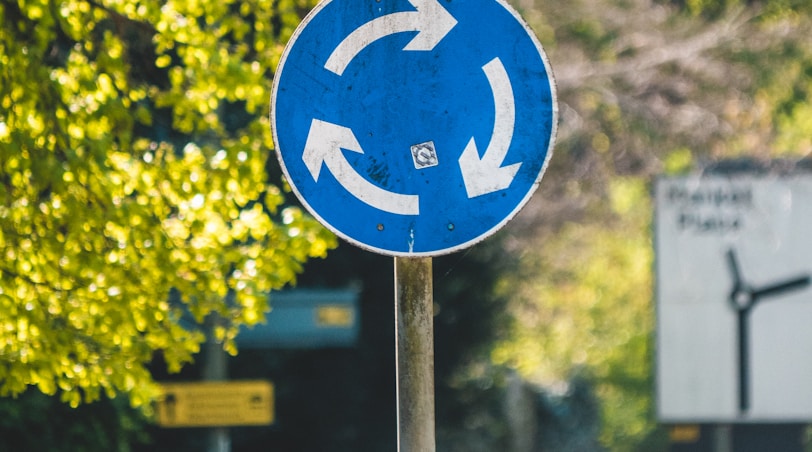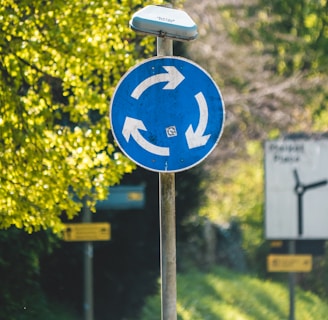Combating Pollution and Waste: Transitioning Towards a Circular Economic System
12/25/20234 min read


Introduction
Pollution and waste have become pressing global issues that require urgent attention. The linear economic model, which follows a "take-make-dispose" approach, has contributed significantly to the degradation of our environment. To combat these challenges, there is a growing need to transition towards a circular economic system. This blog post will explore the concept of a circular economy and discuss its potential in combating pollution and waste.
What is a Circular Economy?
A circular economy is an economic system that aims to minimize waste and maximize the value of resources by keeping them in use for as long as possible. Unlike the linear economy, which relies on constant extraction of raw materials and disposal of products after use, a circular economy focuses on reducing, reusing, and recycling materials to create a closed-loop system.
In a circular economy, products are designed to be more durable, repairable, and recyclable. The emphasis is on extending the lifespan of products and materials through strategies such as remanufacturing, refurbishing, and sharing. This shift in approach not only reduces waste but also promotes resource efficiency and environmental sustainability.
Benefits of a Circular Economy
The transition towards a circular economy offers numerous benefits:
- Reduction in Pollution: By minimizing waste and the need for new raw materials, a circular economy reduces the pollution associated with extraction, manufacturing, and disposal processes. This includes the reduction of greenhouse gas emissions, air and water pollution, and the depletion of natural resources.
- Resource Conservation: A circular economy promotes the efficient use of resources by keeping them in circulation for longer periods. This reduces the demand for new resources and helps preserve finite resources such as minerals, metals, and fossil fuels.
- Economic Growth: Transitioning towards a circular economy can stimulate economic growth by creating new business opportunities and jobs. The recycling and remanufacturing sectors, for example, can generate employment and contribute to economic development.
- Innovation and Design: A circular economy encourages innovative approaches to product design and manufacturing. Companies are incentivized to create products that are more durable, repairable, and recyclable, leading to a shift towards a more sustainable and resource-efficient production system.
- Resilience: A circular economy promotes resilience by reducing dependence on finite resources and minimizing the risks associated with price volatility and supply chain disruptions. By closing the loop, businesses and communities become more self-sufficient and less vulnerable to external shocks.
Strategies for Transitioning Towards a Circular Economy
Transitioning towards a circular economy requires a combination of strategies and actions at various levels:
1. Reconsidering Product Design
Product design plays a crucial role in the transition towards a circular economy. Companies should focus on creating products that are durable, repairable, and designed for disassembly. This ensures that products can be easily maintained, repaired, and recycled at the end of their lifespan. Additionally, incorporating recycled materials into new products can help close the loop and reduce the demand for virgin resources.
2. Promoting Extended Producer Responsibility
Extended Producer Responsibility (EPR) is a policy approach that holds manufacturers responsible for the entire lifecycle of their products, including their disposal. By implementing EPR programs, companies are incentivized to design products with end-of-life considerations in mind. This encourages the development of take-back systems, recycling initiatives, and the adoption of more sustainable production practices.
3. Encouraging Recycling and Waste Management
Efficient waste management and recycling systems are essential components of a circular economy. Governments and businesses should invest in infrastructure and technologies that enable the effective collection, sorting, and processing of recyclable materials. Public awareness campaigns can also help promote recycling and encourage individuals to adopt sustainable waste management practices.
4. Fostering Collaboration and Partnerships
The transition towards a circular economy requires collaboration among various stakeholders, including governments, businesses, consumers, and NGOs. Partnerships can facilitate the sharing of knowledge, resources, and best practices, leading to more effective solutions and a faster transition towards a circular economic system.
5. Educating and Engaging Consumers
Consumer behavior plays a significant role in shaping the demand for sustainable products and services. Educating and engaging consumers about the benefits of a circular economy can drive demand for eco-friendly products, encourage responsible consumption, and promote the adoption of recycling and reuse practices.
Success Stories and Examples
Several countries and companies have already made significant progress in transitioning towards a circular economy:
1. The Netherlands
The Netherlands is known for its commitment to sustainability and circularity. The Dutch government has implemented various policies and initiatives to promote the circular economy, including tax incentives for recycling and the establishment of a Circular Economy Innovation Fund. The country is also home to numerous circular startups and has set ambitious targets to achieve a fully circular economy by 2050.
2. Interface
Interface, a global carpet manufacturer, has embraced the principles of a circular economy. The company has implemented a take-back program called "ReEntry" that allows customers to return old carpets for recycling. Interface then uses the recycled materials to produce new carpets, closing the loop and reducing waste.
3. Patagonia
Outdoor clothing brand Patagonia is renowned for its commitment to sustainability. The company encourages customers to repair their products rather than buying new ones, offering repair services and providing resources for DIY repairs. Patagonia also uses recycled materials in its products and promotes responsible consumption through initiatives like the "Worn Wear" program.
Conclusion
The transition towards a circular economy is crucial for combating pollution and waste. By rethinking our approach to production, consumption, and waste management, we can create a more sustainable and resilient economic system. Governments, businesses, and individuals all have a role to play in driving this transition and ensuring a healthier future for our planet.
Contacts
hksvvv@gmail.com
